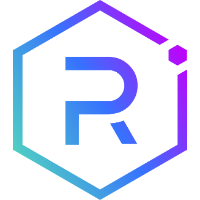Circle, the fintech powerhouse behind the world’s second-largest stablecoin, USDC, has taken a major step toward going public. On Tuesday, the company officially filed for an initial public offering (IPO) on the New York Stock Exchange (NYSE), becoming the first major crypto firm to make a renewed push for listing since Donald Trump returned to power, promising a pro-crypto policy stance.
The move comes amid a resurgence in crypto market confidence and follows a previous failed attempt by Circle to go public in 2022 through a SPAC merger. This time, however, Circle is banking on a more favorable regulatory and political environment to complete its Wall Street debut.

Key Developments in Circle’s IPO Filing
Filed late Tuesday, the IPO application follows earlier confidential paperwork submitted in 2023. The offering will be underwritten by leading financial institutions JPMorgan Chase and Citigroup. Circle’s largest backers include Fidelity, General Catalyst, Breyer Capital, and Accel, signaling strong institutional interest in the company’s future.
Circle’s IPO attempt not only reflects renewed investor optimism but could also pave the way for other digital asset firms to test public markets. U.S.-based crypto exchange Kraken is reportedly exploring its listing for 2026.
Revenue Growth but Shrinking Profit Margins
Circle reported $1.66 billion in revenue for 2023, up from $1.4 billion the previous year. The bulk of this revenue came from interest earned on the reserves backing USDC, which are mostly invested in BlackRock-managed money market funds. Elevated U.S. interest rates throughout 2023 helped boost those returns.
However, net income dipped to $156 million from $268 million in 2022 due to higher operational costs. The firm spent $1 billion in transaction and incentive fees, primarily to partners like Coinbase, to encourage the use and distribution of USDC, underscoring the costs of maintaining stablecoin dominance.
What Makes USDC Important?
USDC is a fiat-backed stablecoin pegged 1:1 to the U.S. dollar. It enables faster and cheaper transactions compared to traditional banking systems and is widely used in crypto trading, decentralized finance (DeFi), and payments. The platform currently has $60 billion worth of USDC in circulation, up from $43 billion earlier this year. However, it remains second to rival Tether, which dominates the market with over $144 billion in tokens.

Regulatory Winds Shift in Circle’s Favour
The renewed IPO push coincides with a dramatically improved regulatory climate under the Trump administration. President Trump has declared his ambition to make the U.S. “the crypto capital of the planet,” and since January, the SEC has dropped or paused many enforcement actions against crypto firms. At the same time, Congress is debating new legislation to establish a comprehensive regulatory framework for stablecoins.
Allaire Speaks on Transparency and Market Evolution
In a letter to investors, Circle CEO Jeremy Allaire said the IPO reflects the firm’s mission of transparency. He stated:
“For Circle, becoming a publicly traded corporation on the New York Stock Exchange is a continuation of our desire to operate with the greatest transparency and accountability possible.”
From SVB Crisis to Recovery
Circle’s return to the IPO path also highlights a dramatic comeback story. In early 2023, the company was exposed as the largest unsecured creditor to Silicon Valley Bank (SVB), with $3.3 billion in reserves temporarily trapped. The scare briefly caused USDC to lose its peg to the dollar, but swift intervention by U.S. regulators stabilized the situation and restored market confidence.
Rate Cuts Could Impact Revenue
Looking ahead, Circle may face headwinds as the Federal Reserve is expected to begin cutting interest rates in response to fears over Trump’s proposed tariff policies and slowing economic growth. Since Circle’s revenue is heavily dependent on interest from reserve holdings, any significant rate cuts could squeeze future earnings.
Conclusion
Circle’s IPO filing signals a new chapter not only for the company but for the wider crypto industry. In a market still recovering from past volatility, Circle is positioning itself as a stable, transparent, and scalable digital finance platform. With regulatory support building and investor interest growing, the coming months may mark a turning point for stablecoins and their role in mainstream finance.
Frequently Asked Questions (FAQs)
1- What is a Circle?
Circle is a U.S.-based financial technology company best known for issuing the USDC stablecoin.
2- Why is Circle going public now?
Circle aims to leverage improved market conditions and regulatory clarity under the Trump administration.
3- What is USDC used for?
USDC is used for crypto trading, payments, remittances, and within decentralized finance (DeFi) platforms.
4- How does Circle make money?
Primarily through interest earned on USDC reserves held in secure money market funds.
Appendix: Glossary of Key Terms
Circle – A U.S.-based fintech company best known for issuing the USDC stablecoin.
USDC – A dollar-pegged stablecoin used for crypto trading, payments, and digital finance.
IPO – Initial Public Offering; the process of a private company becoming publicly traded.
Stablecoin – A cryptocurrency with a stable value, usually backed by fiat currency like the U.S. dollar.
NYSE – New York Stock Exchange, one of the world’s largest stock trading platforms.
SPAC – Special Purpose Acquisition Company, used to take companies public through a merger.
Money Market Fund – A low-risk investment vehicle used to generate interest on reserve assets.
Depeg – A situation where a stablecoin temporarily loses its fixed value against its peg currency.
References
Financial Times – ft.com
CoinDesk – coindesk.com
THEBLOCK – theblock.co
CNBC – cnbc.com























































































![BitTorrent [New]](https://s2.coinmarketcap.com/static/img/coins/64x64/16086.png)





















